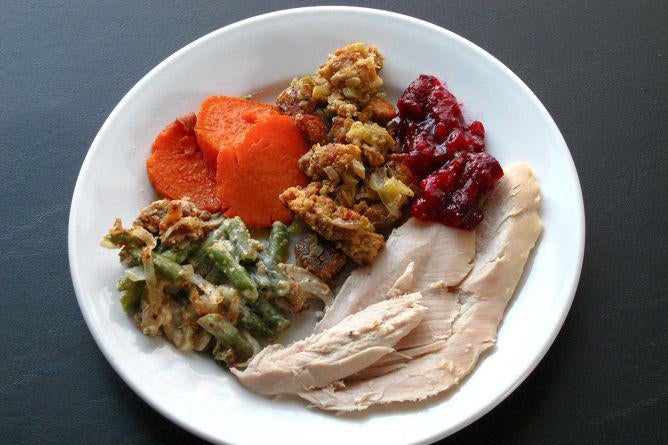Editor’s note: Brian Wansink resigned from his post at Cornell University after an investigation found widespread academic breaches across his 25-year career. We would advise you to keep that in mind while reading this piece.
Thanksgiving is the most gluttonous day of the year. Gathering for a feast to celebrate thankfulness has turned into a national eating contest, with the average American possibly scarfing down 4,500 calories of turkey dinner with all the trimmings. Can a Thanksgiving meal be generous without going overboard?
Brian Wansink is a nutritionist, the director of Cornell University’s Food and Brand Lab, and a leading research expert on eating behaviors. His recently published book, Slim by Design, includes practical tips for designing homes, restaurants, supermarkets, workplaces, school lunch trays, and more that can help people lose or maintain weight by redesigning environments to subtly cue us to make healthy choices instead of relying on our finite powers to resist temptation.
I asked Wansink if he had any tips for designing Thanksgiving dinner for those who want to enjoy the holiday without stuffing themselves tighter than turkeys. He was careful to point out that he loves the holiday and isn’t looking to rain on anybody’s Thanksgiving parade.
“This is one of the greatest holidays of the year,” Wansink told me by phone. “I think the priority on Thanksgiving is to really reflect on how grateful you are and probably not to start a diet. But there are ways to cut down on calories.”
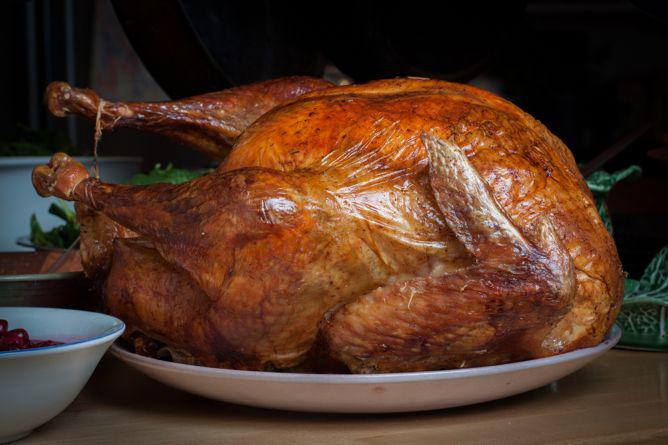
Leave healthier dishes on the main table and banish the calorie bombs to a side table.
Courtesy of Tim Sackton/Flickr
Don’t waste calories before the main meal.
Wansink says that his research on Thanksgiving eating habits shows that people eat 11 percent of total calories grazing on packaged snacks before the main meal. Save your appetite for dinner, he says.
“Don’t eat anything that is store-bought,” Wansink says, whether it’s mixed nuts or a pie from the grocery. “Nobody is going to be offended if you don’t eat something that came in a package, but they will be if you don’t eat the special dish they made just for you.”
Serve food at the table, then remove the most caloric dishes to a side table.
Wansink said that it’s important to uphold our Norman Rockwell–esque expectations of a bountiful Thanksgiving table. But once everyone has been served, banish the stuffing, mashed potatoes, rolls, and other high-calorie side dishes to a side table. “Our research shows that people eat about 20 percent less if served off a side table, stove, or counter rather than right in front of you,” Wansink said. Forcing people to get up for seconds or thirds, he said, “works well because getting up means visually announcing that you’re going to be a pig. Although Thanksgiving is a much less judgmental dinner.” Nevertheless, he said, leaving healthier dishes like green beans, salad, and turkey on the table encourages people to fill up on leaner fare.
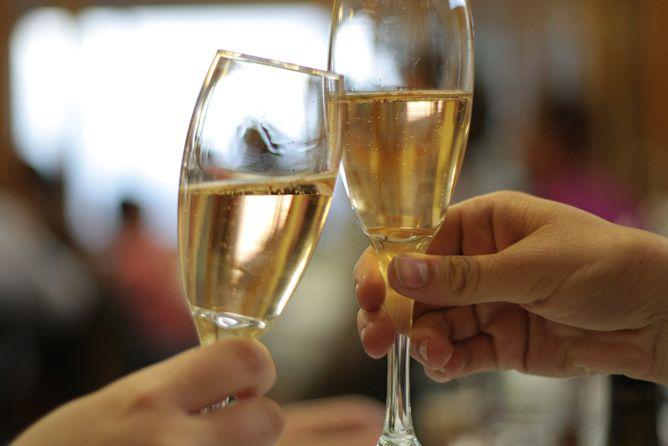
Drink alcohol from tall, narrow glasses to avoid overdoing it.
Courtesy of A1404/Flickr
To avoid drinking too much, make sure that everyone has a water glass, and serve wine in tall, narrow glasses.
Drinking accounts for 10 percent of all Thanksgiving calories consumed, Wansink said. His research indicates that we drink more out of wide-rimmed glasses, and he suggests using tall, narrow glasses instead (though the red wine–drinking snobs at your table might have a hard time swallowing that advice).
If you’re especially concerned about keeping guests from drinking too much, he said, keep the wine off the table. Instead of pouring refills, bring fresh glasses and place them next to the empty ones without removing them to create a visual reminder of how much alcohol has been consumed.
Use smaller serving bowls and tablespoon-sized serving spoons, not serving tongs.
“Tongs lead to overserving,” Wansink says. Smaller serving bowls that can be refilled in the kitchen as necessary help people to maintain a healthy perception of portions. Smaller serving spoons mean they will likely serve themselves less.
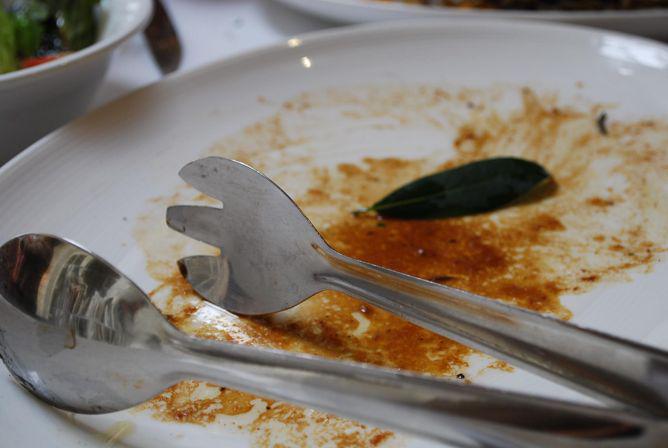
Serving tongs are not your friend.
Courtesy of Alpha/Flickr
Use smaller plates in a contrasting color to the food.
Wansink’s research shows that using smaller plates keeps people from overeating. He suggests forgoing the usual dinner plates that are 12 inches in diameter and opting for those that are no smaller than 9 inches in diameter. “Not too small, or it backfires,” he said.
He added that people eat more when the color of their food blends in with the plate. You will probably be using your best china on Thanksgiving, Wansink pointed out, but since Thanksgiving dinner is largely a pale affair, this might not be the best time to use white plates.
If your hosts are food-pushers, be strategic.
Wansink said that if you know you’re going to be around relatives or friends who encourage gluttony, be sure to serve yourself small portions, so making a show of going back for more doesn’t lead to overdoing it.
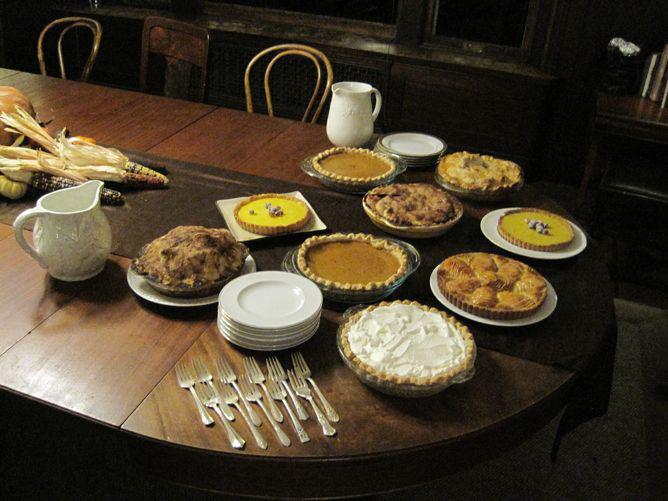
Wansink’s research revealed that 20 percent of Thanksgiving calories are consumed at dessert.
Courtesy of tinaxduzgen/Flickr
Stick to one dessert.
If Wansink’s research shows that up to 20 percent of total calories are consumed before a meal, dessert accounts for another 20 percent. While there’s a good chance that there will be more than one dessert on the Thanksgiving table, especially if it’s a potluck, Wansink said your best bet is sticking to just one. “The real danger with dessert is not the first intake,” he said. “It’s sampling one of everything.”
Precut a pie that you might have divided up into six or eight pieces into 10 or 12, he said. Present the dessert “right on the table,” serve everyone a slice, then relegate it to a side table. “It’s impossible to control how much food there is if it’s a potluck,” he said. “But you can control how accessible it is so that people don’t overeat.”
